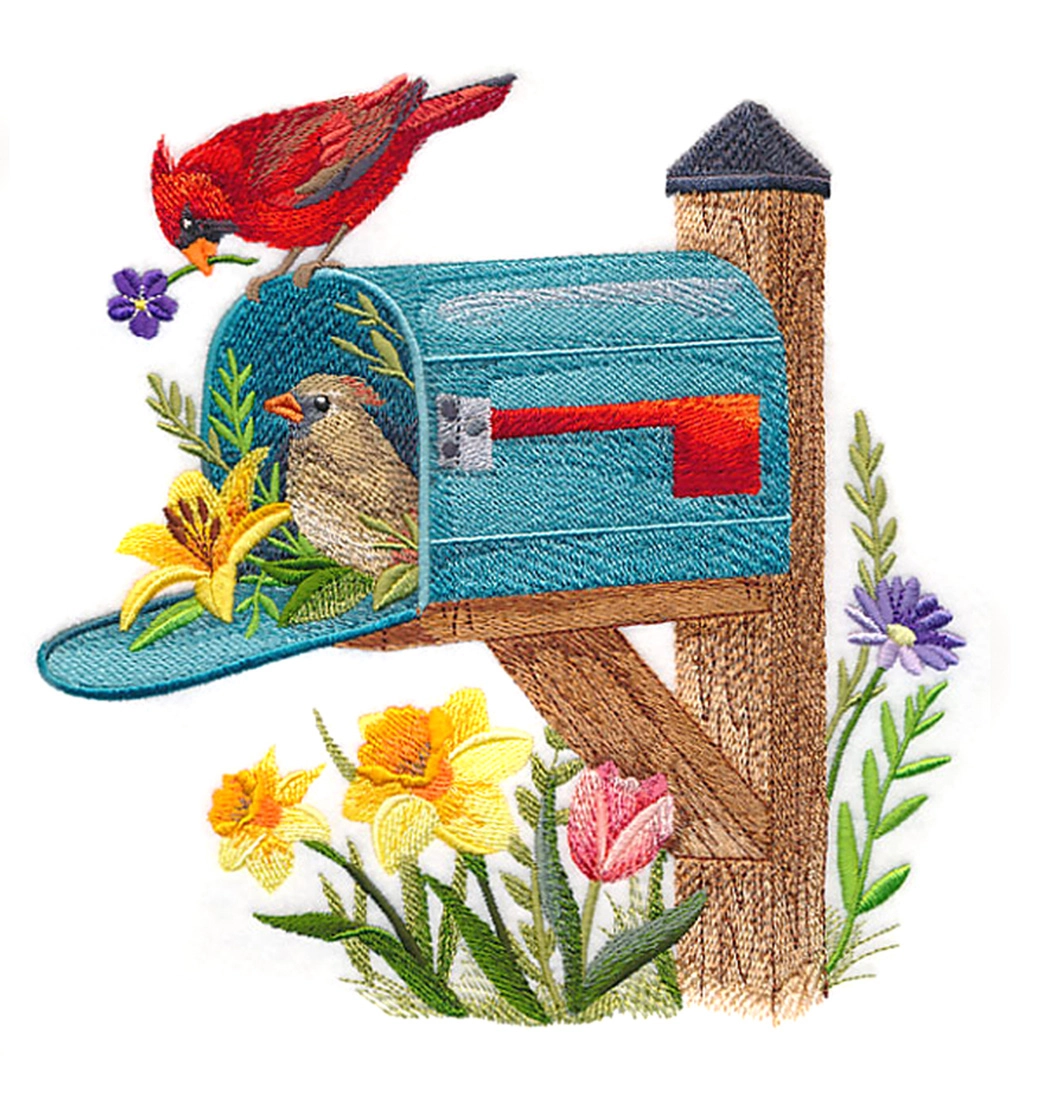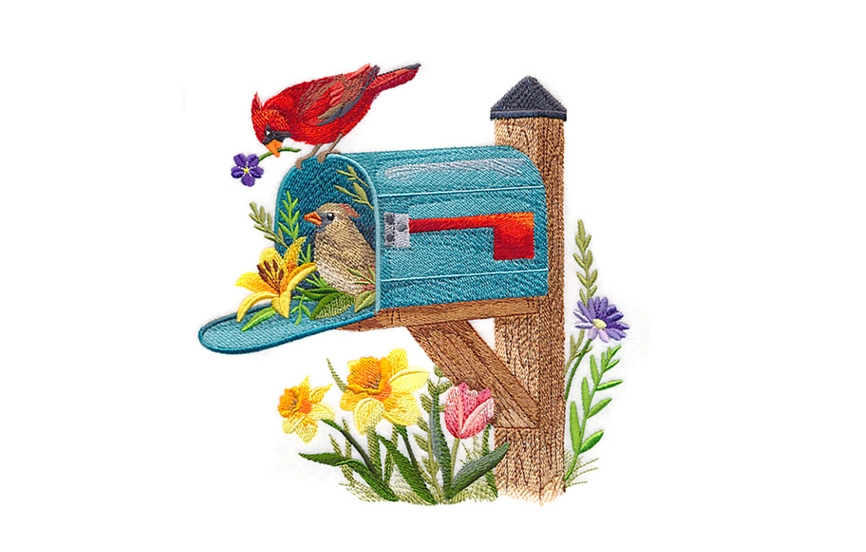Designs Used
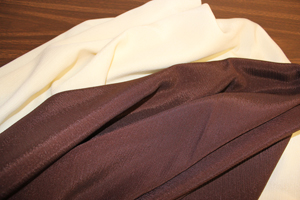
Charmeuse is a lightweight woven fabric and is used most often in garments. That silky-feeling lingerie that isn't made of silk? It's charmeuse. Evening gowns and fancy blouses without the heavy price tag and static cling? Charmeuse. Jacket and suit lining? You guessed it: Charmeuse.
Originally charmeuse was a fine and expensive silk. But today it's more common to find charmeuse that is 100% polyester. It brings a little bling to your projects too; charmeuse has a sparkle and shimmer in its polyester fibers.
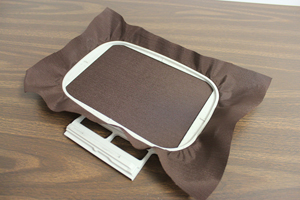
Charmeuse has earned a reputation in the stitching world as being a fickle little fabric. Some seamstresses will steer beginners toward other fabrics until they're more experienced. It's a bit slippery to work with, it can tear easily, and it has the tendency to pucker when stitching seams.
As with all fickle fabrics, a little experience and a dash of trial-and-error will have you working with this fabric in no time at all. And, if you're working with a pre-constructed garment, then these tips will have you embroidering on charmeuse like a pro, no matter your sewing skill level.
Because charmeuse is slippery, it's important to use cutaway stabilizer. Don't use tear-away or water-soluble stabilizers -- those won't work.
Spray the cutaway stabilizer with a quick shot of temporary spray adhesive. We use KK100, a Gunold product. Spray adhesive creates a nice tight bond between the fabric and stabilizer.
Hoop the fabric and stabilizer together firmly. Because charmeuse is slippery, you might want to use double-sided tape or rubberized shelf liner in the hoop as well. Anne Campbell and Joan Warr show you how to do that in the Perfect Hooping article here.
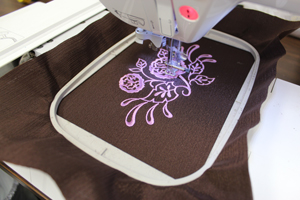
When choosing a design, consider how the fabric will be draped, and how the fabric will flow. A pillow cover, for example, does not drape, so a design of any complexity will work well.
Garments, such as a dress, skirt, or blouse, will flow and drape, as will curtains. When working with those items, choose light, airy, and open designs for the best results.
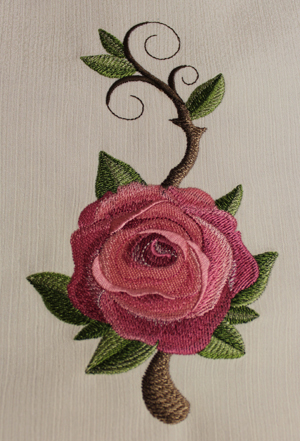
To see how charmeuse holds up with complex and realistic designs, I stitched this Roses Blossoms design. It has more than 47,000 stitches, and uses shading and highlighting techniques that results in thread overlapping other stitches in some sections. Those are some of the qualities of a "complex" design.
The charmeuse proved to be a beautiful canvas for this complex design. No puckering, no gapping, no dimpling or cupping.
Because this is a more solid design, the fabric isn't going to drape the best. It'll work fine on the back of a shirt (not the front), or the bottom of a skirt or dress. But eventually this sample will end up as a cushion cover or a chair back, where draping isn't as important or necessary as it is in garments.
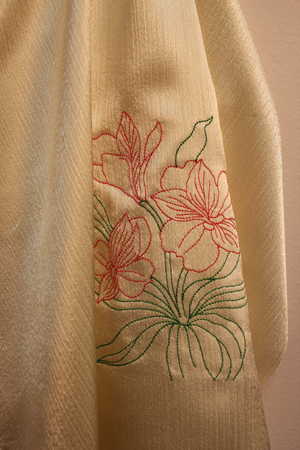
This sample features a vintage Alstroemeria design. The design is very simple with large open areas, and simple running stitches. There is no shading or highlighting, making this a very simple design.
When draping is important, choose simple designs like the one shown here. In this manner, the stitches form and mold to the shape of the fabric, allowing the fabric to flow.
This can be used in skirts, dresses, shirts, scarves, curtains -- anywhere you want to have an easy-breezy feeling.
Before leaving the fabric store with your charmeuse, check the laundering instructions on the bolt. Generally polyester charmeuse requires a machine wash in cold water on a delicate cycle, or a hand wash. Lay it flat to dry.
For silk charmeuse, the instructions will likely advise dry cleaning or hand washing on cold water.

